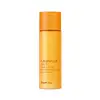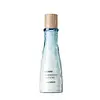What's inside
What's inside
 Key Ingredients
Key Ingredients

 Benefits
Benefits

 Concerns
Concerns

 Ingredients Side-by-side
Ingredients Side-by-side

Water
Skin ConditioningButylene Glycol
HumectantGlycerin
Humectant1,2-Hexanediol
Skin ConditioningCetyl Ethylhexanoate
EmollientHydrogenated Polydecene
EmollientNiacinamide
SmoothingGlyceryl Glucoside
HumectantButyrospermum Parkii Butter
Skin ConditioningCetearyl Alcohol
EmollientGlyceryl Stearate
EmollientLimnanthes Alba Seed Oil
Skin ConditioningCetearyl Olivate
Sorbitan Olivate
EmulsifyingVinyldimethicone
Propanediol
SolventC14-22 Alcohols
Emulsion StabilisingCarbomer
Emulsion StabilisingC12-20 Alkyl Glucoside
EmulsifyingTromethamine
BufferingEthylhexylglycerin
Skin ConditioningAdenosine
Skin ConditioningCoptis Chinensis Root Extract
AntioxidantDisodium EDTA
Parfum
MaskingHyaluronic Acid
HumectantHydrolyzed Hyaluronic Acid
HumectantSodium Hyaluronate
HumectantAsparagus Cochinchinensis Root Extract
Skin ConditioningSaccharomyces/Xylinum/Black Tea Ferment
Skin ConditioningUlmus Davidiana Root Extract
Skin ConditioningVinca Minor Leaf Extract
Skin ConditioningCamellia Sinensis Leaf Extract
AntimicrobialPyrus Malus Flower Extract
Skin ConditioningThymus Vulgaris Extract
PerfumingHydrolyzed Collagen
EmollientWater, Butylene Glycol, Glycerin, 1,2-Hexanediol, Cetyl Ethylhexanoate, Hydrogenated Polydecene, Niacinamide, Glyceryl Glucoside, Butyrospermum Parkii Butter, Cetearyl Alcohol, Glyceryl Stearate, Limnanthes Alba Seed Oil, Cetearyl Olivate, Sorbitan Olivate, Vinyldimethicone, Propanediol, C14-22 Alcohols, Carbomer, C12-20 Alkyl Glucoside, Tromethamine, Ethylhexylglycerin, Adenosine, Coptis Chinensis Root Extract, Disodium EDTA, Parfum, Hyaluronic Acid, Hydrolyzed Hyaluronic Acid, Sodium Hyaluronate, Asparagus Cochinchinensis Root Extract, Saccharomyces/Xylinum/Black Tea Ferment, Ulmus Davidiana Root Extract, Vinca Minor Leaf Extract, Camellia Sinensis Leaf Extract, Pyrus Malus Flower Extract, Thymus Vulgaris Extract, Hydrolyzed Collagen
Water
Skin ConditioningGlycerin
HumectantPropanediol
Solvent1,2-Hexanediol
Skin ConditioningCetyl Ethylhexanoate
EmollientLimnanthes Alba Seed Oil
Skin ConditioningTrehalose
HumectantButylene Glycol
HumectantVinyldimethicone
Silica
AbrasiveCetearyl Olivate
Ammonium Acryloyldimethyltaurate/Vp Copolymer
Sorbitan Olivate
EmulsifyingSodium Polyacryloyldimethyl Taurate
Emulsion StabilisingHydrogenated Polydecene
EmollientEthylhexylglycerin
Skin ConditioningCitrus Aurantium Dulcis Peel Oil
MaskingCitrus Aurantium Bergamia Fruit Oil
MaskingDisodium EDTA
Sodium Citrate
BufferingTrideceth-10
CleansingCitric Acid
BufferingSodium Hyaluronate
HumectantHyaluronic Acid
HumectantHydrolyzed Hyaluronic Acid
HumectantVaccinium Macrocarpon Fruit Extract
AstringentVaccinium Angustifolium Fruit Extract
Skin ProtectingCetraria Islandica Extract
CleansingLaminaria Digitata Extract
Skin ProtectingLavandula Angustifolia Oil
MaskingPelargonium Graveolens Flower Oil
MaskingAmyris Balsamifera Bark Oil
MaskingCitrus Paradisi Peel Oil
MaskingMelaleuca Alternifolia Leaf Oil
AntioxidantEucalyptus Globulus Leaf Oil
PerfumingBoswellia Carterii Oil
MaskingJuniperus Mexicana Oil
MaskingXanthan Gum
EmulsifyingGlyceryl Caprylate
EmollientPseudoalteromonas Ferment Extract
HumectantWater, Glycerin, Propanediol, 1,2-Hexanediol, Cetyl Ethylhexanoate, Limnanthes Alba Seed Oil, Trehalose, Butylene Glycol, Vinyldimethicone, Silica, Cetearyl Olivate, Ammonium Acryloyldimethyltaurate/Vp Copolymer, Sorbitan Olivate, Sodium Polyacryloyldimethyl Taurate, Hydrogenated Polydecene, Ethylhexylglycerin, Citrus Aurantium Dulcis Peel Oil, Citrus Aurantium Bergamia Fruit Oil, Disodium EDTA, Sodium Citrate, Trideceth-10, Citric Acid, Sodium Hyaluronate, Hyaluronic Acid, Hydrolyzed Hyaluronic Acid, Vaccinium Macrocarpon Fruit Extract, Vaccinium Angustifolium Fruit Extract, Cetraria Islandica Extract, Laminaria Digitata Extract, Lavandula Angustifolia Oil, Pelargonium Graveolens Flower Oil, Amyris Balsamifera Bark Oil, Citrus Paradisi Peel Oil, Melaleuca Alternifolia Leaf Oil, Eucalyptus Globulus Leaf Oil, Boswellia Carterii Oil, Juniperus Mexicana Oil, Xanthan Gum, Glyceryl Caprylate, Pseudoalteromonas Ferment Extract
Ingredients Explained
These ingredients are found in both products.
Ingredients higher up in an ingredient list are typically present in a larger amount.
1,2-Hexanediol is a synthetic liquid and another multi-functional powerhouse.
It is a:
- Humectant, drawing moisture into the skin
- Emollient, helping to soften skin
- Solvent, dispersing and stabilizing formulas
- Preservative booster, enhancing the antimicrobial activity of other preservatives
Butylene Glycol (or BG) is used within cosmetic products for a few different reasons:
Overall, Butylene Glycol is a safe and well-rounded ingredient that works well with other ingredients.
Though this ingredient works well with most skin types, some people with sensitive skin may experience a reaction such as allergic rashes, closed comedones, or itchiness.
Learn more about Butylene GlycolCetearyl Olivate is an emulsifier and texture enhancer. It is derived from the fatty acids of olive oil and Cetearyl alcohol, and is biodegradable.
As an emulsifier, it is used to prevent oils and waters from separating. It can also
Manufacturers use the name Olivem 1000. This ingredient has been found to preserve the natural microbiome of skin. Having a healthy microbiome helps keep our skin healthy and protects against harmful bacteria. This ingredient is grouped with Sorbitan Olivate under the name Olivem 1000.
Learn more about Cetearyl OlivateCetyl Ethylhexanoate is an emollient ester. It comes from cetearyl alcohol and 2-ethylhexanoic acid.
Cetyl Ethylhexanoate is an emollient that adds a velvety feel to skin without being greasy or oily. Emollients help trap moisture into your skin, keeping your skin soft and hydrated.
Disodium EDTA plays a role in making products more stable by aiding other preservatives.
It is a chelating agent, meaning it neutralizes metal ions that may be found in a product.
Disodium EDTA is a salt of edetic acid and is found to be safe in cosmetic ingredients.
Learn more about Disodium EDTAEthylhexylglycerin (we can't pronounce this either) is commonly used as a preservative and skin softener. It is derived from glyceryl.
You might see Ethylhexylglycerin often paired with other preservatives such as phenoxyethanol. Ethylhexylglycerin has been found to increase the effectiveness of these other preservatives.
Glycerin is already naturally found in your skin. It helps moisturize and protect your skin.
A study from 2016 found glycerin to be more effective as a humectant than AHAs and hyaluronic acid.
As a humectant, it helps the skin stay hydrated by pulling moisture to your skin. The low molecular weight of glycerin allows it to pull moisture into the deeper layers of your skin.
Hydrated skin improves your skin barrier; Your skin barrier helps protect against irritants and bacteria.
Glycerin has also been found to have antimicrobial and antiviral properties. Due to these properties, glycerin is often used in wound and burn treatments.
In cosmetics, glycerin is usually derived from plants such as soybean or palm. However, it can also be sourced from animals, such as tallow or animal fat.
This ingredient is organic, colorless, odorless, and non-toxic.
Glycerin is the name for this ingredient in American English. British English uses Glycerol/Glycerine.
Learn more about GlycerinHyaluronic acid is naturally found in healthy skin. It is a humectant, meaning it draws moisture to your skin.
This ingredient helps hydrate, soothe, and protect the skin.
What makes hyaluronic acid so hydrating? It has the capacity to bind or hold large amounts of water.
Fun fact: It is already naturally found in our bodies, such as the fluids of our eyes and our joints.
Studies find this ingredient to have anti-inflammatory and anti-microbial properties. This can help speed up wound-healing.
Hyaluronic acid can be irritating if the molecule has a low-molecular weight, or if the molecules are small.
One study found low-molecular weight hyaluronic acid to be pro-inflammatory, meaning some people may experience irritation. This is because our bodies use hyaluronic acid in the wound-healing process to signal to our bodies, via irritation, that something needs healing.
The same study found high-molecular weight hyaluronic acid to be anti-inflammatory.
These are some other common types of Hyaluronic Acid:
Learn more about Hyaluronic AcidHydrogenated Polydecene is an emollient. It creates a non-occlusive film on the skin that offers extra protection for your skin barrier.
The texture of Hydrogenated Polydecene ranges from light and silky to rich.
Hydrogenated Polydecene is the end compound of controlled hydrogenation of Polydecene.
Learn more about Hydrogenated PolydeceneHydrolyzed Hyaluronic Acid is a form of hyaluronic acid. It is created by the hydrolysis of hyaluronic acid with a high molecular weight. Once created, Hydrolyzed Hyaluronic Acid has a low molecular weight.
Low molecular weight HA has been shown to hydrate and increase elasticity of the skin. Increasing elasticity is also associated with reduction of wrinkle depth.
One study found topical low molecular weight hyaluronic acid may be considered for the treatment of rosacea in the adult population. However, we always recommend speaking with a professional about your skin concerns.
Hyaluronic acids are a humectant. This means they draw moisture from the air. Hyaluronic acids help moisturize, soothe, and protect the skin.
Read more about other common forms of hyaluronic acid:
Learn more about Hydrolyzed Hyaluronic AcidLimnanthes Alba Seed Oil is the oil extracted from the seeds of the meadowfoam plant. This oil is non-fragrant and is an emollient. As an emollient, meadowfoam seed oil helps soften and hydrate the skin.
Meadowfoam seed oil is stable and has a long shelf life due to its chemical structure. It has the highest concentration of stable fatty-acids among plant oils, preventing it from degrading once exposed to oxygen.
Due to the fatty acid content, this ingredient may not be fungal-acne safe.
Meadowfoam is native to California and Oregon.
Learn more about Limnanthes Alba Seed OilPropanediol is an all-star ingredient. It softens, hydrates, and smooths the skin.
It’s often used to:
Propanediol is not likely to cause sensitivity and considered safe to use. It is derived from corn or petroleum with a clear color and no scent.
Learn more about PropanediolSodium Hyaluronate is hyaluronic acid's salt form. It is commonly derived from the sodium salt of hyaluronic acid.
Like hyaluronic acid, it is great at holding water and acts as a humectant. This makes it a great skin hydrating ingredient.
Sodium Hyaluronate is naturally occurring in our bodies and is mostly found in eye fluid and joints.
These are some other common types of Hyaluronic Acid:
Learn more about Sodium HyaluronateSorbitan Olivate is created from the fatty acids in olive oil and sorbitol.
This ingredient is an oil in water emulsifier. It helps stabilize a product by preventing oils and waters from separating. Sorbitan Olivate also helps hydrate the skin.
Manufacturers sell sorbitan olivate under the name OliveM 1000. OliveM 1000 a multifunctional ingredient. It is self-emulsifying. According to a manufacturer, OliveM 1000 does not disrupt natural skin biome.
Due to its olive oil base, this ingredient may not be fungal-acne safe.
Learn more about Sorbitan OlivateVinyldimethicone is a type of silicone.
Water. It's the most common cosmetic ingredient of all. You'll usually see it at the top of ingredient lists, meaning that it makes up the largest part of the product.
So why is it so popular? Water most often acts as a solvent - this means that it helps dissolve other ingredients into the formulation.
You'll also recognize water as that liquid we all need to stay alive. If you see this, drink a glass of water. Stay hydrated!
Learn more about Water